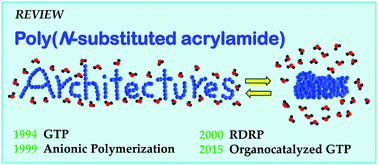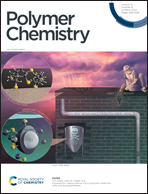Precision synthesis for well-defined linear and/or architecturally controlled thermoresponsive poly(N-substituted acrylamide)s
Abstract
We describe the progress in precision polymerizations of specific kinds of N-alkylacrylamides and N,N-dialkylacrylamides to produce polymers showing thermoresponsive properties in aqueous media, which representatively include the reversible-deactivation radical polymerizations (RDRPs) of N-isopropylacrylamide (PNIPAM) and N,N-diethylacrylamide (DEA) since the 2000s. Early research in this field was devoted to the synthesis of the corresponding polyacrylamides with well-defined structures. In the mid-2000s, researchers began studying the structural effects on the thermoresponsive properties of the resulting polymers, thereby clarifying the relationships between the cloud point temperature (Tcp) and main-chain length and/or polarity of the end-groups. RDRPs, such as reversible addition–fragmentation chain transfer (RAFT) polymerization and atom transfer radical polymerization (ATRP), have been extensively demonstrated and their achievements have been reviewed elsewhere. The present review instead focuses on methodologies. One example is organocatalyzed group transfer polymerization (GTP), which joined the repertoire of precision polymerizations of DEA in 2015. The latter part of this paper focuses on architecturally controlled poly(N-substituted acrylamide)s such as block, star, and cyclic thermoresponsive polymers. The synthetic pathways and thermoresponsive properties originating from the specific structures of these polymers are described.



 Please wait while we load your content...
Please wait while we load your content...